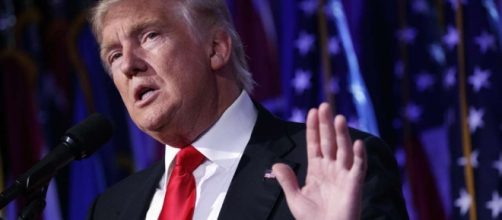In one of his first moves as President of the United States, Donald Trump signed an order formally withdrawing the United States from the Trans-Pacific Partnership Trade deal. The Trans-Pacific Partnership, a twelve-country trade agreement among Pacific Rim countries, had been negotiated and promoted by former President Barack Obama but had been waiting on ratification by the US Senate.
Trump fulfils campaign pledges on protectionism
President Trump's signing of the executive order ending the Trans-Pacific Partnership, or TPP, fulfilled a history of promises then-candidate Trump made on the campaign trail.
Trump campaigned on promise of economic protectionism, ending what he considers to be trade deals that are harming American workers, and renegotiating the global world order that has existed with the United States as the uni-polar global superpower since the end of the Cold War. Trump breaks with long-standing Republican orthodoxy on trade, as previous Republican presidents and most congressional Republican leaders are in favor of free trade and large trade deals.
In addition to his executive action on the TPP, President Trump also made executive actions freezing hiring of federal government workers, and also re-instituted the 'Mexico City Policy.' This policy bans federal government spending toward international organizations that perform abortions and is typically instituted by Republican presidents upon entering office.
The President's actions on the TPP drew sharp responses from other US elected officials in a way that blurred party lines. Fellow Republican and Arizona Senator John McCain criticized Trump's actions, whereas Democratic Senator and former presidential candidate Bernie Sanders welcomed the ending of the TPP.
Trump may signal the end of international free trade
President Trump had been a longtime critic of the TPP, a stance that is typically shared not by Republicans but by the American labor movement and those on the left in the Democratic Party. Many critics of the TPP usually object to measures in the agreement that lower tariffs and trade barriers, as well establishing investor-state dispute settlement (ISDS).
Proponents of the TPP and other trade agreements state that free trade boosts standard of living, makes products cheaper for consumers, and is necessary to keep the United States economically competitive.
However, opponents of the TPP argue that this and other international trade agreements lower wages for workers, can hurt certain national industries, and undermine national sovereignty by giving international corporations the right to override laws of individual countries.
Now that the U.S. has left the TPP, many political observers believe Trump will next target NAFTA, a North-American trade agreement between the U.S., Canada and Mexico. Trump had harsh words for NAFTA on the campaign trail, and is planning to send representatives to discuss trade with Canadian officials next week.

